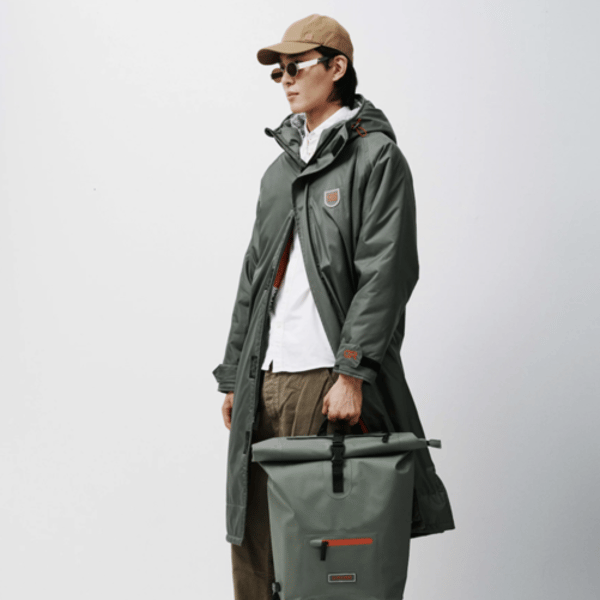Per Eli Russell Linnetz, you should view this lookbook less in a G.I. Joe or Warfare kind of way—the latter being the recent Iraq war film starring Kit Connor, Charles Melton, and Joseph Quinn—and consider it more in the spirit of Andy playing with his miniature green soldier figurines in Toy Story. Only with a side of the hallucinatory darkness of Francis Coppola’s 1979 Apocalypse Now—and, of course, the intensity of its source material, Joseph Conrad’s 1988 novella Heart of Darkness.
Which is to say, look at these images less as Linnetz’s glorification of warfare, or as a pro-military portrait, and consider it his examination of the presence of conflict in our daily lives. Apropos, in addition to the war movie references, Linnetz also mentioned the film Big Wednesday, a 1978 bildungsroman that portrays a group of surfers in Malibu, California, and their attempts to dodge the Vietnam War draft, the events of which push them into adulthood.
Linnetz titled this resort delivery Surplus, in reference to the surplus store as a constant presence in “a deep corner of American consciousness.” (For those not born and raised in the US, the surplus store is a retail repository of excess gear, military or otherwise; they tend to have both the charm of places selling lots for cheap things and the heaviness of haunted objects and the ephemera of past lives.) Linnetz repurposed surplus stock, which he said he’s been collecting for years, and placed it alongside his more luxurious interpretations. Patch-worked parkas and jackets were in the mix alongside ERL camouflage separates, supple Donegal sweaters, and cool-looking cargos in fantastically overdyed fabrics.
Imagery of war is heavy and conversations around it, particularly in the US, a country known for its bellicosity around the world, are nuanced and complex. But they don’t always have to be if we let our moral compasses lead North. Linnetz said he is far removed from news cycles and trending topics, and that he looks at ERL as a project that explores pockets of American culture from both a human and an apparel perspective. With ERL, he’s carved a niche as one of the truest believers in American fashion’s vernacular and presence in the global fabric of sportswear. And by building his assortments narrative-first, often mining nostalgia by telling stories of skaters or prom-goers or bike riders, he’s managed to make those narratives a selling point. The caveat this time is that it’s a complicated moment for camouflage and military motifs. Still, there’s no arguing that Linnetz’s timing is often spot-on when it comes to his cultural commentary.


